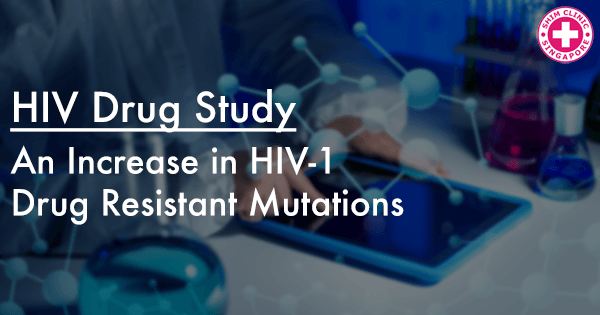The introduction of antiretroviral therapy (ART) has intensely reduced HIV-1 associated deaths, mother-to-child HIV-1 transmission, and adult HIV-1 rates. This is as a result of the extensive administration of homogeneous first line regimens that contain two nucleoside reverse transcriptase inhibitors commonly referred to as NRTIs as well as a nonnucleoside RT inhibitor referred to as NNRT. Unfortunately, the long-term success of ART is affected by the development of acquired drug resistance (ADR) and transmitted drug resistance (TDR).
There is an increasing popularity of acquired and transmitted HIV-1 drug resistance. This has consequently become a major obstacle to the success of antiretroviral therapy in the low and middle-income countries that have been hit hardest by the HIV-1 epidemic. To address this issue, experts recommend genotypic drug resistance testing to facilitate the choice of initial ART in areas where there is an increase in transmitted drug resistance. This will also enable care providers to determine which individuals with virological failure on either first or second-line ART regimen will need a change in treatment.
Testing HIV-1 Drug Resistance Mutations
A group of experts in the areas of drug resistance, assay development and public health sought to detect the NRTIs and PI-associated drug-resistance mutations with the highest sensitivity and specificity for ARV selection and the greatest effect on in vitro and ARV susceptibility. The study also studied the occurrence of mutations in datasets of individuals with transmitted drug resistance, virological failure on a first-line NRTI-containing regimen and virological failure on a primary enhanced PI containing regimen.
The study proposed that two major NRTI drug resistant mutations (M184V and K65R) and four major NNRT drug resistant mutations (K103N, Y181C, G190A, and V106M) would be the most beneficial genotypic resistance testing in low and middle-income countries. One or more of these six inhibitors was existing in 61.2% of the analyzed virus sequences from individuals who had never received ART before. 98.8% of analyzed virus sequences from individuals on a first-line NRTI or NNRTI-containing regimen showed intermediate or high-level acquired drug resistance. The detection of one or more of these drug resistant mutations in an individual who had never received ART-before or in an individual with virological failure on a first-line NRTI or NNRTI-containing regimen may can be considered to be a sign for a protease inhibitor (PI)-containing regimen or closer virological monitoring based on country policy or cost-effectiveness.
Mutation Classification
The experts used the Stanford HIV Drug Resistance Database (HIVDB) mutation penalty scoring system to classify major NRTI, NNRTI, and PI-resistance mutations and also to describe the level of resistance in the clinical isolates.
The study involved meta-analysis of more than 50,000 individuals who had never received ARV before as found in 287 published studies. The study found that M184V was the most common transmitted major NRTI-associated drug resistance mutations, happening in 54% of viruses from individuals with intermediate or high-level NRTI transmitted drug resistance in low and middle-income countries as well as in 31% of viruses from individuals with intermediate or high-level NRTI transmitted drug resistance in upper-income countries. M184I, K65R, L74V/I, Y115F, K70R and T215Y/F were the second most common transmitted major NRTI drug resistance mutations.
Read the research paper here: http://journals.plos.org/plosone/article?id=10.1371/journal.pone.0145772

